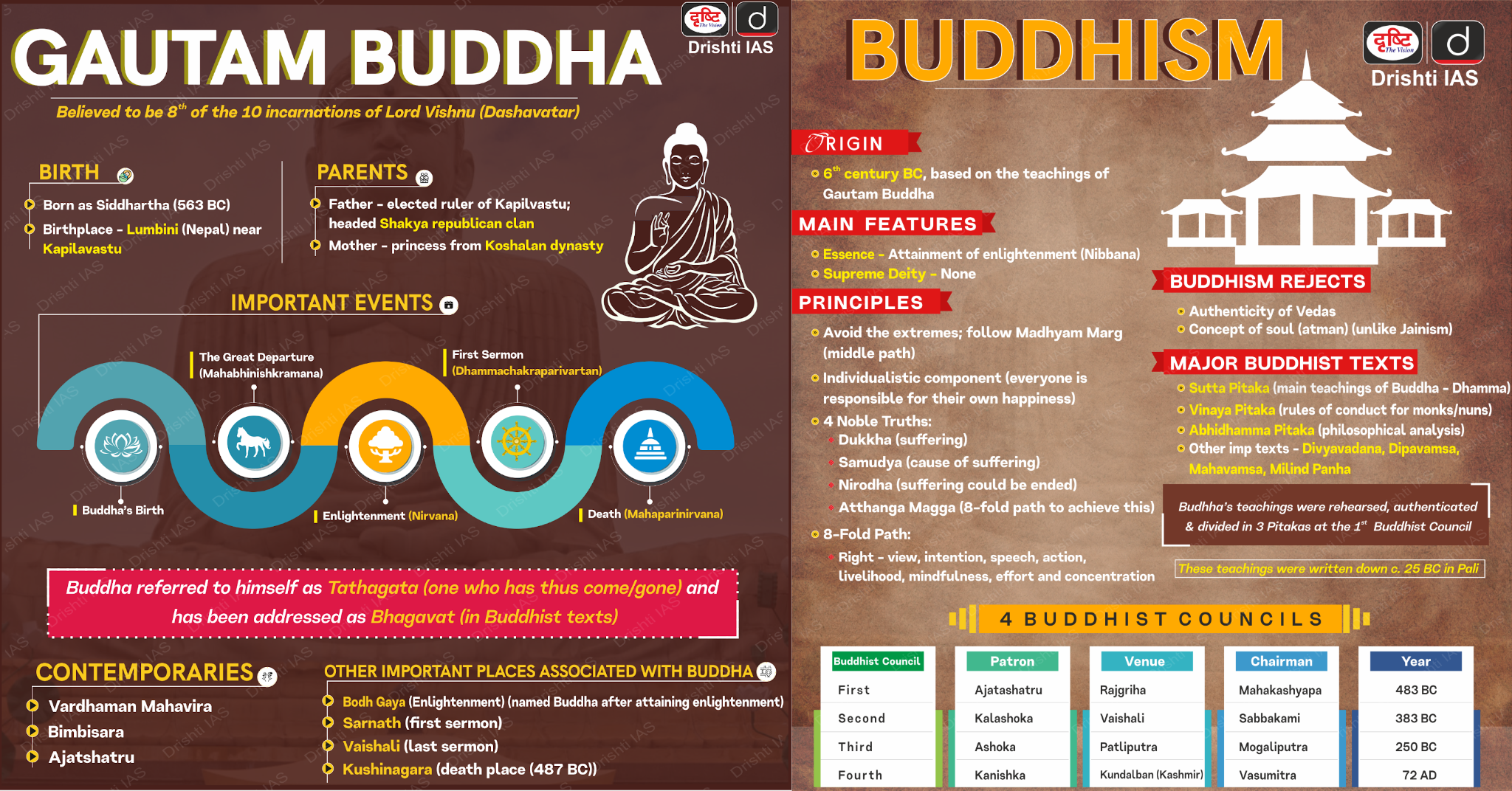Important Facts For Prelims
India’s Sacred Relic of Sakyamuni Buddha to Vietnam
- 02 May 2025
- 6 min read
Why in News?
India is sending the sacred relic of Sakyamuni Buddha from Sarnath to Vietnam for an international exposition marking the United Nations Day of Vesak 12th May 2025, it is organized by the Ministry of Culture and the International Buddhist Confederation (IBC).
- This event highlights the influence of Buddhism in Southeast Asia and the significant role of ancient Indian rulers in spreading Buddhism across the region.
Note: Shakyamuni Buddha is the name given to Gautama Buddha. The term ‘Buddha’ means "the awakened one," a title applicable to anyone who attains enlightenment in Buddhist doctrine.
- However, ‘Shakyamuni’, meaning “sage of the Shakya clan,” specifically refers to the historical figure Siddhartha Gautama, son of King Suddhodhana and Queen Maya, born in Kapilavastu, part of Shakya Republic.
What is the Significance of Sarnath Relic of Sakyamuni Buddha?
- The relic of Sakyamuni Buddha was excavated from Nagarjuna Konda in Andhra Pradesh between 1927 and 1931 by the Archaeological Survey of India (ASI).
- It holds immense religious value, as it is believed to be a corporeal relic of the Buddha himself, preserved since his Mahaparinirvana.
- It was gifted to the Mahabodhi Society of India in 1932, the relic has since been enshrined at the Mulagandha Kuti Vihara in Sarnath.
How did Indian Rulers Contribute to the Spread of Buddhism in Southeast Asia?
- Emperor Ashoka (268–232 BCE): Ashoka sent Buddhist missionaries to Southeast Asia. His son Mahinda and daughter Sanghamitta were instrumental in establishing Buddhism in Sri Lanka.
- Ashoka’s missions played a crucial role in planting the roots of Theravāda Buddhism in Sri Lanka and later in Southeast Asia.
- Gupta Period: The Gupta Empire (4th–6th century CE) promoted Mahayana Buddhism, which reached Southeast Asia via trade and scholars.
- Gupta rulers supported the construction of Buddhist universities like Nalanda, attracting monks and students from across Asia.
- Borobudur, a massive Buddhist monument in central Java, Indonesia, blends the forms of a stupa, temple mountain (inspired by Mount Meru in Hindu mythology), and mandala (a mystical symbol of the universe).
- Influenced by Indian Gupta and post-Gupta art, it was designated a UNESCO World Heritage site in 1991.
- Trade-Facilitated Religious Exchange: Indian rulers, particularly during the Maurya and Gupta periods, promoted maritime trade, connecting eastern Indian ports like Tamralipti (an ancient port city on the Bay of Bengal) with regions such as Sumatra, Java, and the Malay Peninsula.
- This trade route also saw Buddhist monks and artisans spread Buddhist ideas, rituals, and iconography across Southeast Asia.
- The Srivijaya Kingdom in Sumatra (Indonesia) flourished due to Indian influence, promoting Buddhism through trade and cultural exchange.
- Cultural Diplomacy and Influence: Indian epigraphy, Sanskrit inscriptions (Prambanan Temple-Java), and Buddhist art styles (e.g., Amaravati and Gupta Schools) were adopted in Java (Indonesia), Cambodia, Thailand, and Myanmar.
- Angkor Wat in Cambodia is the largest religious monument in the world, and was built in the 12th century by Khmer King Suryavarman II. Originally dedicated to Hindu god Vishnu, it later became a Buddhist temple and was designated a UNESCO World Heritage Site in 1992.
- Additionally, Bagan, a UNESCO World Heritage Site in Myanmar, is home to thousands of Buddhist temples and stupas, showcasing Theravada Buddhist art and architecture and reflecting India's missionary efforts in spreading Buddhism.
UPSC Civil Services Examination, Previous Year Question (PYQ)
Prelims
Q. With reference to the religious history of India, consider the following statements: (2020)
- Sthaviravadins belong to Mahayana Buddhism.
- Lokottaravadin sect was an offshoot of Mahasanghika sect of Buddhism.
- The deification of Buddha by Mahasanghikas fostered the Mahayana Buddhism.
Which of the statements given above is/are correct?
(a) 1 and 2 only
(b) 2 and 3 only
(c) 3 only
(d) 1, 2 and 3
Ans: (b)
Q. With reference to the religious history of India, consider the following statements: (2016)
- The concept of Bodhisattva is central to the Hinayana sect of Buddhism.
- Bodhisattva is a compassionate one on his way to Enlightenment.
- Bodhisattva delays achieving his own salvation to help all sentient beings on their path to it.
Which of the statements given above is/are correct?
(a) 1 only
(b) 2 and 3 only
(c) 2 only
(d) 1, 2 and 3
Ans: (b)







